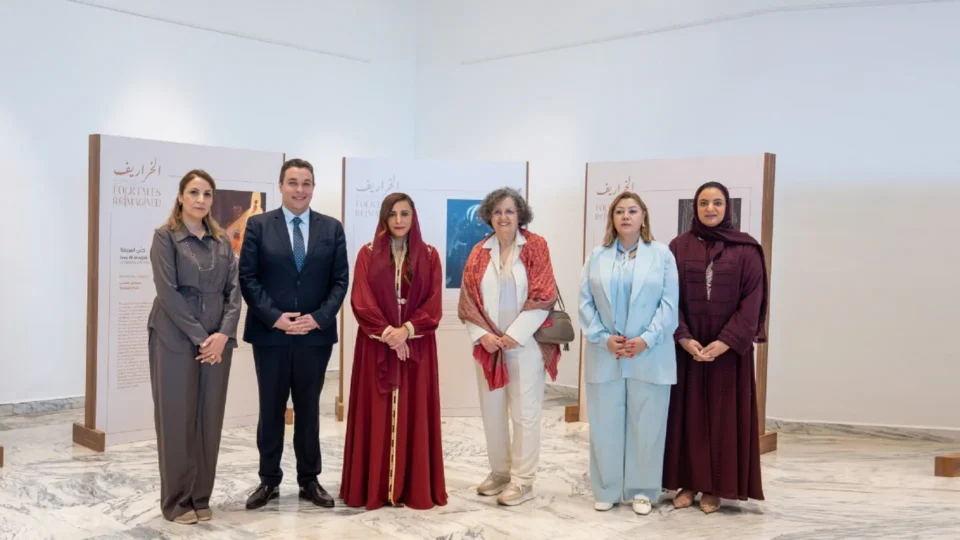As part of Sharjah’s Guest of Honour programme at the 30th Rabat International Publishing and Book Fair, Sheikha Bodour bint Sultan Al Qasimi, Chairperson of the Sharjah Book Authority, inaugurated the Moroccan edition of the “Folktales Reimagined” exhibition at the National Library of the Kingdom of Morocco.
Organised by the UAE Board on Books for Young People (UAEBBY) in partnership with IBBY Morocco and the National Library, the exhibition features a creative collaboration between five Emirati and five Moroccan artists. Each artist reinterprets a traditional folktale from the other’s culture, blending heritage with contemporary art to introduce timeless legends to new generations.
A Cultural Dialogue Through Art
According to Marwa Al Aqroubi, President of UAEBBY, the exhibition began at the Bologna Children’s Book Fair in 2022 with a vision to spark a global cultural movement. “Our goal is to take folktales across borders, evolving the project into a sustainable platform for artistic exchange,” she said. “Through these collaborations, artists explore symbolism, social context, and shared values, transforming folklore into a universal language.”
Six Countries, One Shared Heritage
Now in its sixth edition, the “Folktales Reimagined” exhibition has previously travelled to Italy, Mexico, South Korea, Greece, and Russia. Each stop has served as a space for cultural connection, allowing audiences and artists to engage with stories that reflect shared dreams and collective memory.
Ten Artists, Ten Stories, Two Cultures
In Rabat, ten artists from the UAE and Morocco brought their unique visions to life. Emirati artist Amna Al Ketbi revisited Hadidan le Rusé, the tale of a clever boy who outwits an ogress using a house made of iron. Khalid Al-Khawar interpreted The Weaver’s Daughter, a story of a blind girl who finds hope and healing in a mystical forest. Reem Ahmed explored the legend of Aïcha Kandicha, Morocco’s iconic half-ghost, half-goddess figure symbolizing beauty and rebellion. Dalal Al Jabri visualized Haïna and the Ogre, where a brave girl escapes a beast and saves her fiancé with magical help. Rafia Al Nassar reimagined The Forest Monster, a tale of courage and wit.
On the Moroccan side, Mohamed Haïti drew from the Emirati story of Al-Hama, a monstrous bird that embodies chaos. Sophia Alami interpreted Oum Rukheesh, a deathly omen with wings. Hind Kharifi redefined Bou Sola, a terrifying wolf-like creature with red eyes. Lamia Hmaiddout brought energy to Jinni Al-Raqqas, Sharjah’s dancing cannon spirit. Mickaël El Fathi explored Jinni Al-Marijah, a ghostly child figure who haunts the living with eerie symbolism.
Modern Techniques for Timeless Tales
The artists used a range of media—digital art, illustration, and poster design—to reinterpret these folktales for modern audiences. Their visual storytelling transformed traditional narratives into immersive, vibrant experiences, connecting history with the digital age.

